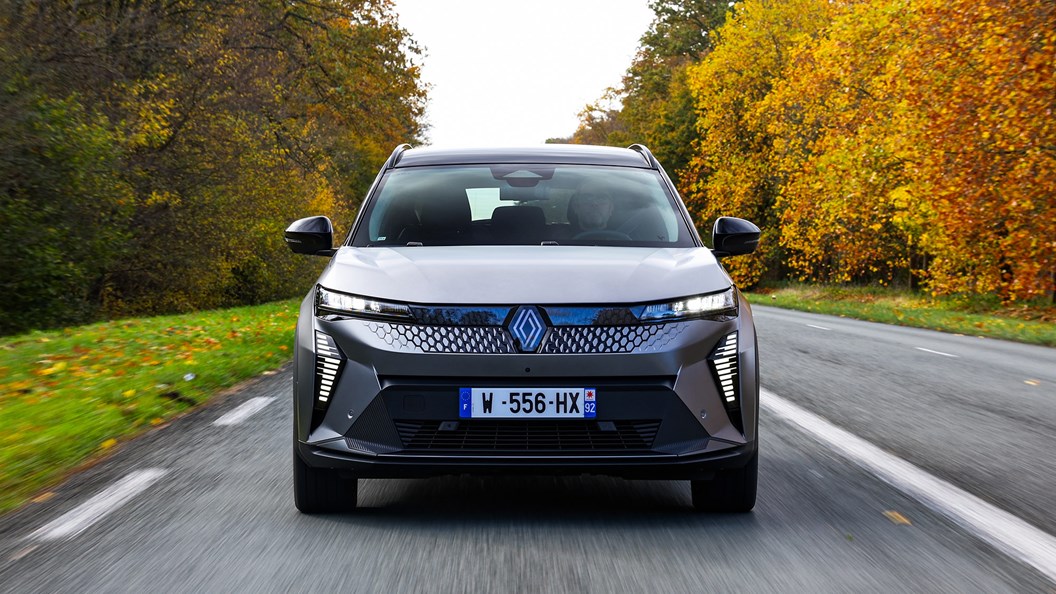
The Scenic people carrier is being reborn as the all-electric Renault Scenic E-Tech SUV, unveiled at the 2023 IAA Munich motor show. An entirely predictable development given the MPV’s plummeting popularity: the Scenic was pulled from UK sale in 2019, and almost all its peers have been axed too.
Nonetheless the revamped Scenic promises to be faithful to the original’s philosophy at least, putting its occupants first with lashings of space, safety and wellbeing features. It also has a profound and welcome focus on sustainability.
Read on for full details and specs of the all-new Scenic E-Tech electric, which arrives on the UK market in May 2024, priced from £40,995 for a Techno E-Tech 100% electric 220hp Long Range.
What’s Scenic about A.N. Other SUV?
As with the original, the Scenic is the Megane E-Tech’s bigger brother (indeed the groundbreaking compact original MPV was named Megane Scenic initially). That means it shares the electric hatchback’s CMF-EV platform and entry-level 60kWh battery, though it’s 269mm longer and has 99mm more steel between the wheels to boost cabin space.
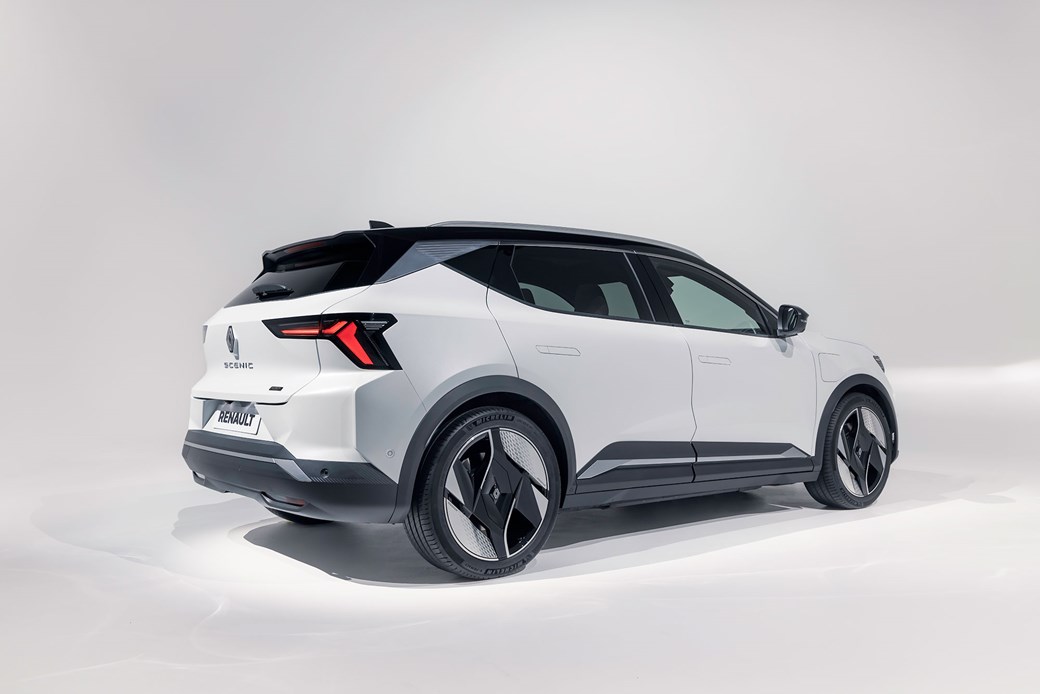
It’s a handsome, nicely proportioned car with its wheel-at-each-corner stance and low roof, more than 30mm lower than the original domed Scenic and many contemporary SUVs. That’s no mean feat for an EV with a two-tier battery under the floor.
While a shimmering grille full of Renault diamond shapes is eye-catching, it’s reminiscent of Peugeot’s approach, as are the vertically arranged, half-rhombi LEDs. Surely no coincidence given Renault poached the Lion brand’s design director Gilles Vidal two years ago – and this is his first Renault.
Customers can pair six exterior paints with a black or grey gloss roof for a two-tone effect; roof rails are standard. Range-enhancing aerodynamic features including air ducts under the day-running lights (DRLs), flush door handles, aerodynamic wheel covers and a squared-off bumper to sever the air to reduce drag.
High tech glass roof to lift the cabin
The interior design feels more exceptional, starting with the packaging. The Scenic is compact at 4468mm long, but the boot is a decent 545 litres while its 2784mm wheelbase makes for rear knee- and headroom that vies for class-leading, Renault claims.
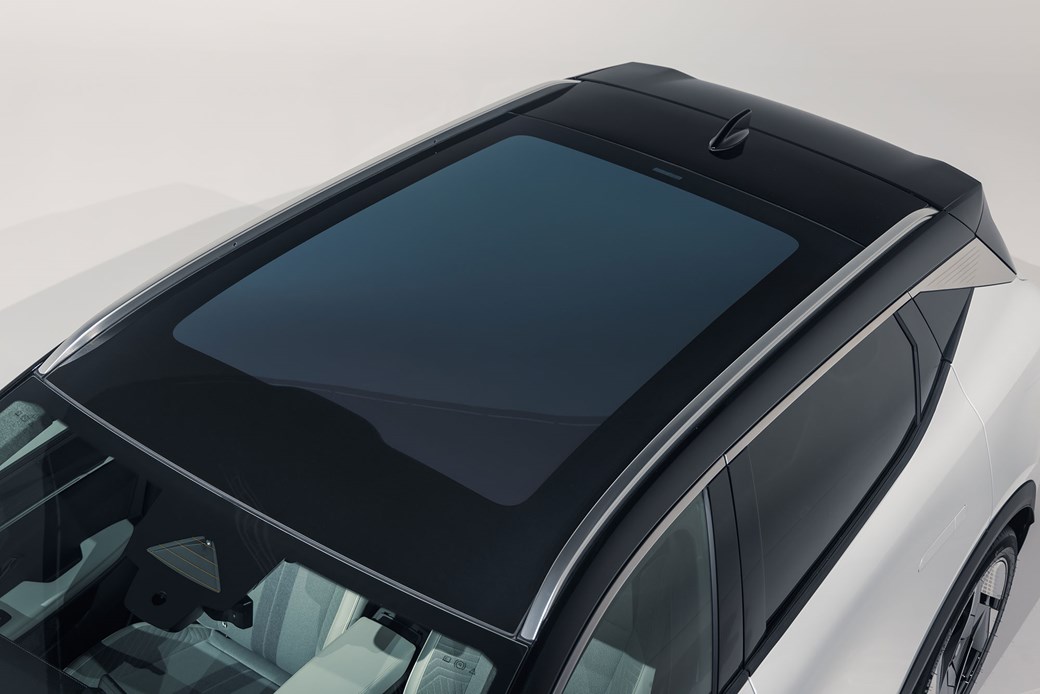
That headspace can be enhanced by a high-tech glass roof, called Solarbay, whose polymer dispersed liquid crystals can switch from opaque to clear at the touch of a button. Voice commands can also tell it to shade only the front or rear sections. Eschewing a motorised sun blind makes it more compact and saves up to 8kg, says Renault. Half of all Scenic glass is recycled, and 90% can be reused at the end of the vehicle’s life.
Some lovely people-centric features too
The original Scenic’s fold-down trays were a novelty in the ’90s, and the new Scenic echoes this with a neat rear armrest. This has fold-out stands for the kids to watch movies on their tablets, which it can also stow or power from two USB-C ports, alongside two drink holders.
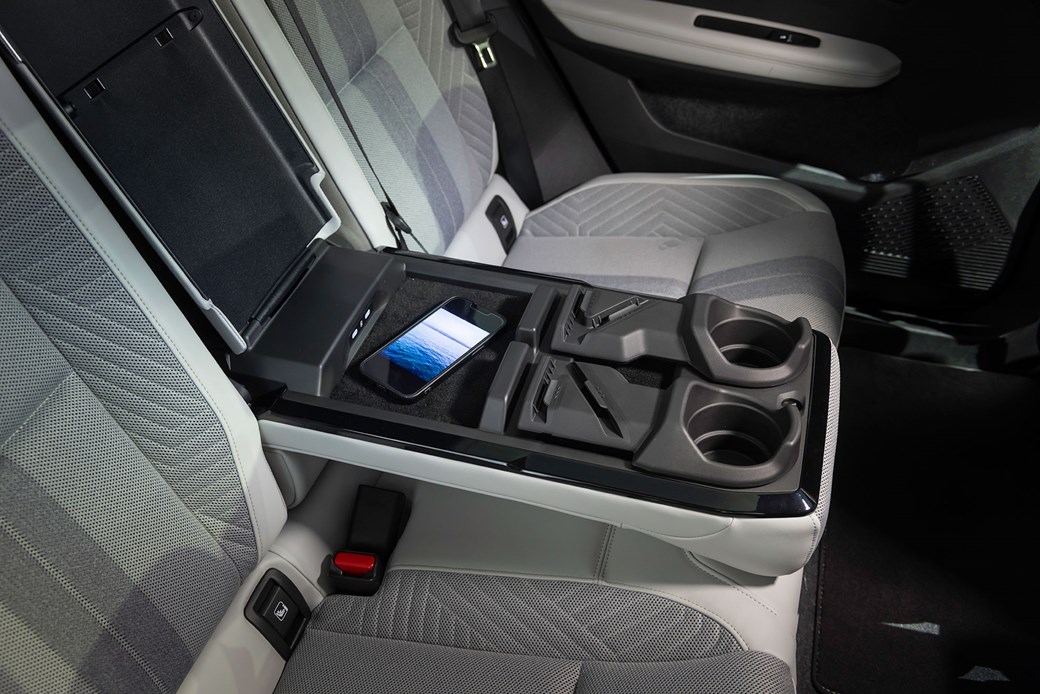
Upmarket Iconic trim features linden wood trim picked from sustainable forests, and ambient lighting can adjust in step with humans’ circadian rhythms to reflect the time of day (cool during sunlight, warmer at night). Among the 50 apps in the Google-driven infotainment is SongPop, where occupants try to name that tune by tapping answers on their smartphones.
And when you park up to charge, powered seats can shift into a relaxed position and perform massages, while the infotainment, ambient lighting, USB chargers and glass roof remain powered for 45 minutes.
New Scenic E-tech: battery, range and charging
The Scenic will be available in standard or long-range spec. The latter has a more powerful motor turning the front wheels, punchier DC charging capability and quicker acceleration. See the full specs for both models below:
2024 Renault Scenic standard range
Battery: 60kWh
Motor: 125kW (168bhp) and 207lb ft
0-62mph acceleration: 9.3sec
Range: 261 miles
Max charge rate: 130kW DC
2024 Renault Scenic high range
Battery: 87kWh
Motor: 160kW (215bhp) and 221lb ft
0-62mph acceleration: 8.4sec
Range: 385 miles
Max charge rate: 150kW DC
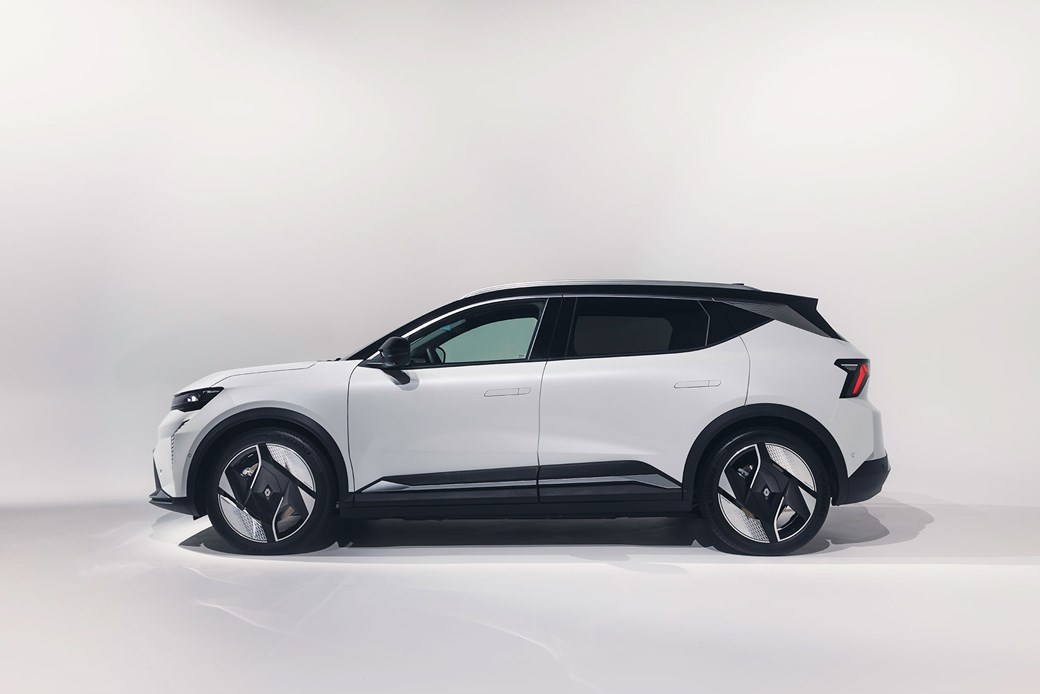
Using the Google-based journey planner (which even considers wind direction and speed to predict electricity consumption), the Scenic will pre-condition the battery as it approaches a charging stop. Renault claims the car can recover 50kWh on a 150kW charger in 30 minutes.
All Scenics have a heat pump to efficiently warm the battery or the cockpit, boosting range. Renault also says revised cell chemistry makes the battery 6% more power dense than the Megane E-Tech’s.
What’s Renault saying about Scenic dynamics?
The CMF-EV platform, which underpins the Nissan Ariya and Megane E-Tech, is a decent foundation. It’s light compared with many peers – the 87kWh bigger battery Scenic weighs 1842kg – and it has a multi-link rear axle which should help with comfort and dynamics.
The Scenic has the same steering ratio as the Megane EV, which should translate into quick responses. Renault claims the chassis resists roll well, so that should deliver an agile car – which sounds somewhat at odds with the occupant-oriented focus…
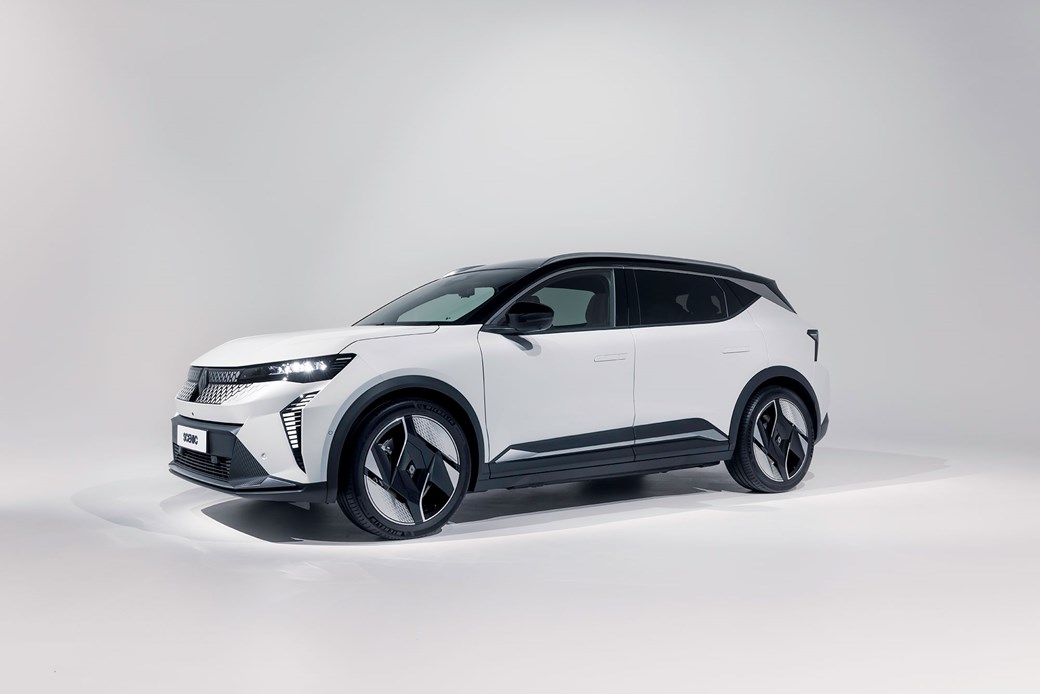
There are four levels of regenerative braking – from zero to 3, optimised for one-pedal driving in town – which should deepen the driving experience. Renault has also worked with French electronica composer Jean-Michel Jarre to create the external pedestrian warning and welcome sounds. Google him, those under the age of 40…
Caring about the environment
Many manufacturers have been talking a good game on recyclability, and here comes Renault’s statement production car. Almost a quarter of the Scenic’s mass comes from recycled parts – and 90% of materials can be used again at the vehicle’s end of life.
For example, some 37% of its chassis and body metals are second-life materials. Bio-sourcing is also important: the dashboard cowling and steering wheel cover are partly plant-based, and plastic from recovered bottles constitutes part of the floor mats and seat fabrics, for example.
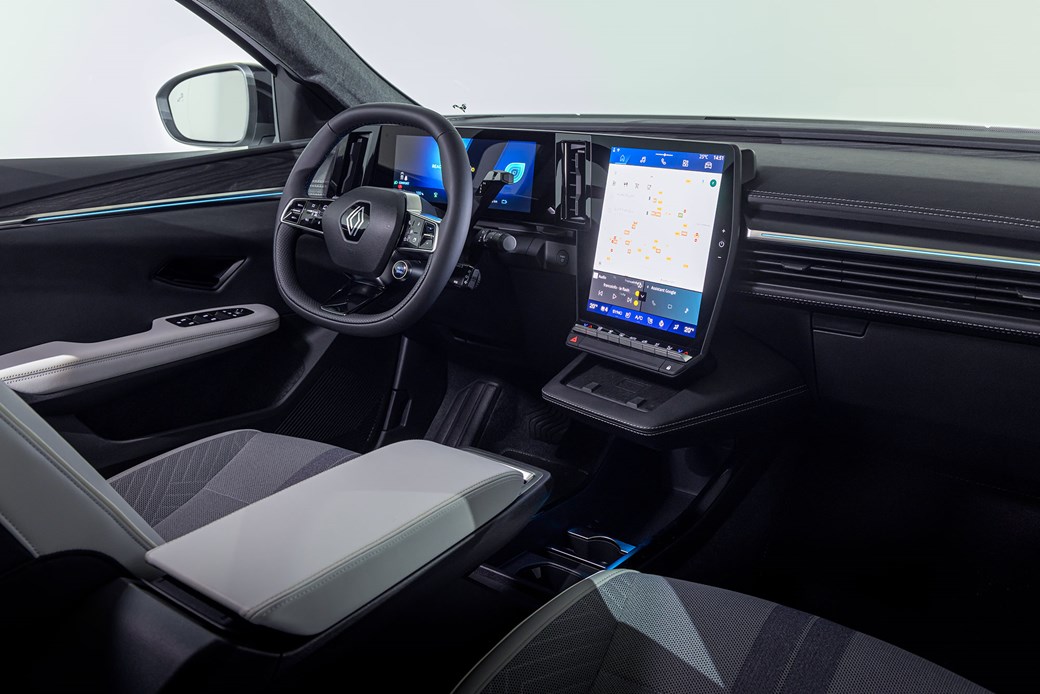
There’s no leather in the car whatsoever (Renault will phase out hide options entirely by 2025), and the motor and battery also forego rare earths, lessening their environmental impact.
And caring about Scenic occupants
The Scenic has the obligatory big screens, including a 12.3in digital driver’s binnacle. This replaces the trad, circular speedo with a speed line which changes colour according to power demand and vehicle speed.
And with the increasing gamification of driving and regulation’s ever-tightening grip on safety, the Scenic introduces a ‘Safety Coach’. This uses the front camera and sensors to monitor driving style including distance from the car in front, cornering speeds and even the use of indicators.
Digital feedback will be similar to cars’ eco-driving coaches, but mission creeping into more aspects of driver monitoring. Renault sees it as a boon to assist inexperienced drivers, others may find it deeply intrusive. It’ll be linked to the speed warning system (mandatory on new cars from July 2024), one of 30 driver assistance systems on the new Scenic.
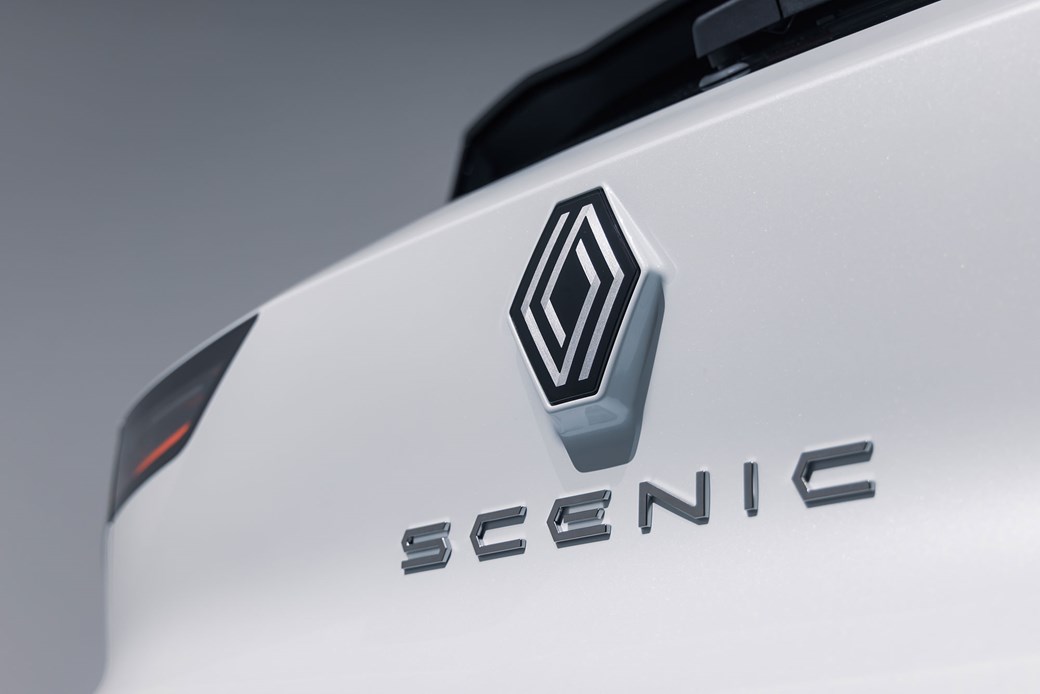
All this is in keeping with the model’s roots. The 1991 concept that presaged it was called S.C.E.N.I.C. (Safety Concept Embodied in a New Innovative Car) and its innovations included drowsy driver monitoring and a driver’s airbag. The new car reminds us that safety is eternally important – and that the modern SUV is the new MPV for the 2020s.





